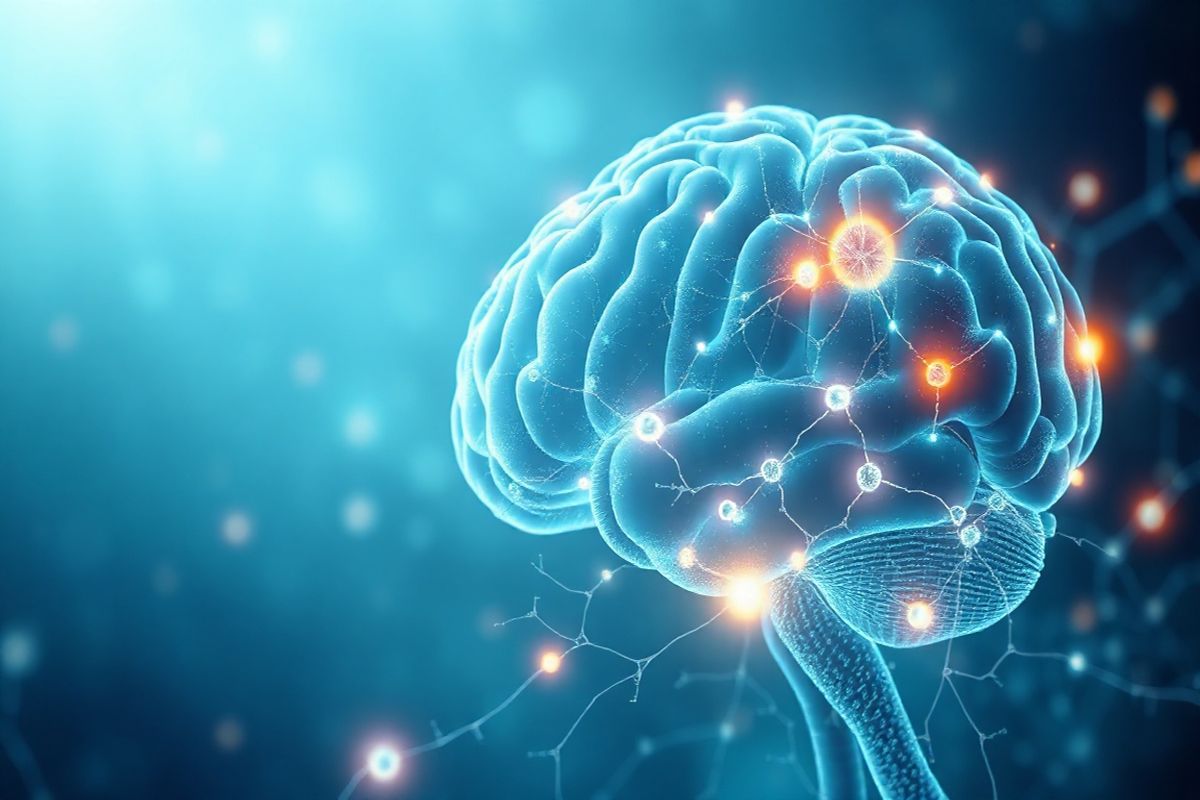Table of Contents
The Neuroscience of Obsessive-Compulsive Disorder

Recent research has highlighted critical insights into the neurobiological underpinnings of ocd, indicating that the disorder is not merely a result of learned behavior or environmental factors but is also rooted in distinct brain differences. Neuroimaging studies have revealed that individuals with OCD often exhibit abnormalities in several brain regions, including the orbitofrontal cortex, anterior cingulate cortex, and basal ganglia (Cleveland Clinic, 2023). These findings suggest that OCD is associated with dysfunction in the circuits responsible for decision-making, emotional regulation, and habit formation.
The involvement of these regions correlates with the symptoms experienced by individuals with OCD. The orbitofrontal cortex plays a pivotal role in processing risks and rewards, while the anterior cingulate cortex is crucial for error detection and emotional regulation. The basal ganglia, particularly the striatum, are involved in habit formation, which may explain the compulsive behaviors seen in OCD patients (Cleveland Clinic, 2023).
Key Brain Regions Affected by OCD
Several key brain regions have been identified as significantly impacted in individuals with OCD:
-
Orbitofrontal Cortex (OFC): This area is linked to the processing of risk and reward and is often hyperactive in individuals with OCD. This hyperactivity can lead to heightened sensitivity to potential dangers and an increased focus on intrusive thoughts (Mayo Clinic, 2023).
-
Anterior Cingulate Cortex (ACC): The ACC is involved in error detection and emotional regulation. In OCD, abnormalities in this region can contribute to the inability to dismiss intrusive thoughts, resulting in persistent anxiety and compulsive behaviors (Cleveland Clinic, 2023).
-
Basal Ganglia: This group of nuclei is integral to the control of voluntary motor movements, procedural learning, and habit formation. Dysregulation in the basal ganglia can lead to the compulsive behaviors characteristic of OCD (Mayo Clinic, 2023).
-
Thalamus: This brain structure acts as a relay station for sensory and motor signals. In OCD, altered thalamic function may contribute to the persistent cycling of obsessions and compulsions, as it is involved in filtering out irrelevant stimuli (Cleveland Clinic, 2023).
Understanding the roles of these regions provides insight into the neurobiological basis of OCD and highlights the complexity of the disorder.
How Brain Structure Variations Influence OCD Symptoms
The structural variations in the brains of individuals with OCD can lead to a range of symptoms that manifest differently in each person. For instance, individuals may experience intense fears of contamination or harm, compelling them to engage in excessive cleaning or checking behaviors. This is exemplified by the increased activity in the orbitofrontal cortex, which correlates with heightened anxiety regarding perceived threats (Mayo Clinic, 2023).
Studies utilizing neuroimaging techniques, such as functional MRI (fMRI), have demonstrated that individuals with OCD show greater activation in the OFC and ACC during tasks that involve decision-making and emotional responses. This heightened activation indicates a potential neurological basis for the inability to dismiss intrusive thoughts, as the brain is essentially “stuck” in a loop of anxiety and compulsive behavior (Cleveland Clinic, 2023).
Moreover, structural differences, such as increased gray matter volume in the OFC, have been associated with the severity of OCD symptoms. These variations can help explain the intensity and persistence of obsessions and compulsions experienced by those with the disorder (Mayo Clinic, 2023).
The Role of Neurotransmitters in OCD and Brain Function

Neurotransmitters play a crucial role in the functioning of the brain and can significantly influence the symptoms and severity of OCD. The primary neurotransmitter implicated in OCD is serotonin. Research suggests that individuals with OCD may have dysregulated serotonin levels, which can affect mood, anxiety, and impulse control (Cleveland Clinic, 2023).
Serotonin Reuptake Inhibitors (SRIs): Medications commonly prescribed for OCD, such as selective serotonin reuptake inhibitors (SSRIs), work by increasing serotonin levels in the brain. This increase can help alleviate some symptoms of OCD by improving overall mood and reducing anxiety (Mayo Clinic, 2023).
Dopamine: Another neurotransmitter that has been studied in relation to OCD is dopamine. Alterations in dopamine signaling, particularly within the basal ganglia, may contribute to the compulsive behaviors seen in OCD. Dopamine is involved in reward processing, and dysregulation in this system may lead to the reinforcement of compulsive behaviors (Cleveland Clinic, 2023).
Overall, understanding the roles of neurotransmitters in OCD not only provides insight into the biological mechanisms underlying the disorder but also informs treatment strategies.
Exploring Treatment Options: Addressing Brain Differences in OCD
Treatment for OCD typically involves a combination of psychotherapy and medication. Cognitive Behavioral therapy (CBT), particularly Exposure and Response Prevention (ERP), is the most effective form of psychotherapy for OCD. This therapeutic approach involves gradually exposing individuals to their fears while helping them resist the urge to engage in compulsive behaviors (Cleveland Clinic, 2023).
Medication
In addition to CBT, pharmacological treatments are often utilized. SSRIs are the first-line pharmacotherapy for OCD and have been shown to be effective in reducing symptoms for many individuals. Other medications, such as clomipramine (a tricyclic antidepressant), can also be beneficial, particularly for those who do not respond to SSRIs (Mayo Clinic, 2023).
Neurostimulation Techniques
For individuals who do not respond to traditional treatments, neuromodulation techniques such as transcranial magnetic stimulation (TMS) and deep brain stimulation (DBS) are emerging as potential options. These methods aim to alter brain activity in specific regions associated with OCD, offering hope for individuals with treatment-resistant symptoms (Cleveland Clinic, 2023).
Conclusion
Understanding the neurobiological differences associated with OCD is crucial for developing effective treatment strategies. By examining the brain structures involved, the role of neurotransmitters, and the implications for treatment approaches, we can better address the needs of individuals living with OCD. Continued research in this area will not only enhance our understanding but also lead to improved therapeutic options for those affected by this challenging disorder.
FAQ Section
What is OCD?
OCD is a mental health condition characterized by persistent, unwanted thoughts (obsessions) and repetitive behaviors (compulsions) performed to alleviate anxiety.
What causes OCD?
The exact cause of OCD is not fully understood, but it is believed to involve a combination of genetic, neurological, and environmental factors.
How is OCD treated?
Treatment typically includes Cognitive Behavioral therapy (CBT), particularly Exposure and Response Prevention (ERP), and medications such as SSRIs.
Can OCD be cured?
While there is currently no cure for OCD, many individuals can manage their symptoms effectively with appropriate treatment.
What are the brain differences observed in individuals with OCD?
Key brain regions affected include the orbitofrontal cortex, anterior cingulate cortex, and basal ganglia, which are involved in decision-making, emotional regulation, and habit formation.
References
- Cleveland Clinic. (2023). Compulsive Disorder): Symptoms & Treatment. Retrieved from https://my.clevelandclinic.org/health/diseases/9490-ocd-obsessive-compulsive-disorder
- Mayo Clinic. (2023). Obsessive-compulsive disorder (OCD) - Symptoms and causes. Retrieved from https://www.mayoclinic.org/diseases-conditions/obsessive-compulsive-disorder/symptoms-causes/syc-20354432











